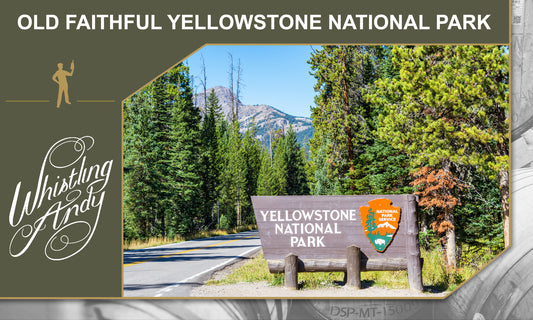Bigfork, Montana, is one of the most picturesque places in America, something that the town’s founder would no doubt agree with. From its beautiful blue waters to its breathtaking mountain views, Bigfork still offers those who enter its boundaries today almost untouched sights they could have taken in at the turn of the previous century.

While there is an undeniable richness that can be found in the beauty of Bigfork, the town is rich in another way, as well. This lovely little burg in the heart of Montana has a vibrant, interesting history that will, no doubt, make your interest in it go deeper than just surface level.
What’s In a Name?
There is controversy surrounding just how the name “Bigfork” came to be the town’s moniker.
One school of thought believes the name was derived from a word from the Salish Indian tribe who were indigenous to the land.
Others say it was called “Bigfork” after a township in Minnesota with the same name.
However, the most common belief is that the town’s name comes from the fact that it is situated at the “big fork” where Flathead Lake converges with the Swan River.

How it Came to Pass
The area that is now Bigfork was once inhabited by Native American tribes such as the Salish and Blackfoot. In 1887, the Dawes Act was established, dividing the space into plots that were individually allotted to tribe members. The excess land was then divided and open to interested settlers.
In 1889, a young man named Everett L. Slitter came to the Flathead Valley area on a hunting and fishing trip. Slitter was utterly enamored by the area's beauty, which prompted him to purchase ranch land in the area. For just over $1,300, Slitter bought about 140 acres, and he set about to build a homestead.

When Slitter bought the land, there was little to work with. A few acres were under cultivation, but they were not yet ready for planting. A dirt-roofed house and a small log stable were the only two buildings on the land. Slitter had his work cut out for him.
1892 proved to be a banner year for Slitter. He opened the first store in Bigfork, returned to his home state of Michigan, married, then returned to Bigfork and planted several hundred cherry trees on what would eventually become one of the largest, most successful orchards in the area.
By 1894, Slitter had planted around 4,000 trees, over 1,500 of which were already fruit-bearing. Bigfork continues to produce a large percentage of the nation’s cherries today.
By 1900, Slitter had built a home large enough to double as Bigfork’s first hotel. It is reported that the hotel had 15 guest rooms and offered guests fine entertainment that would rival what could be found in some of the country’s largest metropolitan areas.

Slitter also built the area’s first post office and became the first official Postmaster.
Bigfork was officially platted in 1901 and included 100 plots. Though Slitter stepped down as the Postmaster soon after, he continued to be a vital part of the town. He spent an exorbitant amount of his own money and time to clear the land that would become the town’s roads and make other improvements to put Bigfork on the map.
Let There Be Light!
In 1901, just as Bigfork officially became a city, a power plant was built in the town along the Swan River. While to modern society, this might not seem like a big deal; however, it was actually a miraculous occurrence.
Even three decades after this powerplant came into existence, just over 30% of the nation had electricity. The fact that this tiny mountain town had a power plant was an unheard-of occurrence.

Today’s Bigfork
Today, Bigfork is the 25th largest city in Montana out of over 300, boasting a population of close to 5,000. Though it has grown as a city, it still retains its original small-town feel.
Being such a beautiful destination, Bigfork welcomes thousands of visitors each year who come to commune with nature. The area is home to a state park and over 30 campgrounds.

While Bigfork still retains its original natural splendor, it is currently home to a world-class cultural district. Residents and visitors are welcome to visit area museums, art galleries, and theaters.
The town is also home to many wonderful shops, restaurants, and hotels.
These things combined helped shape Bigfork into the quaint, beautiful town it is today.
The History of Bigfork, Montana: History Still In the Making
Bigfork, Montana, has a history almost as vast as the state itself. The town comes from humble beginnings and has grown into a place where visitors flock to take in the beauty the area has to offer while offering a taste of culture.

Though the town has grown exponentially since its inception, Bigfork has managed to retain its original splendor while advancing with technology and the times. Bigfork is a town whose history, undoubtedly, is still in the making.





